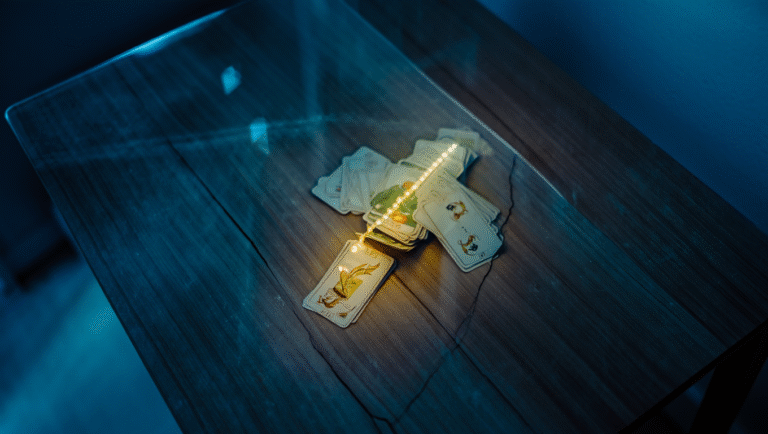Lesson 7: Understanding Reversed Cards
Tarot reversals have a reputation. If you’ve ever pulled a reversed card and felt your heart drop, you’re not alone. Many modern readers flinch at “upside-down” cards, worried they spell doom. But here’s the good news: reversed tarot cards aren’t always negative, and understanding them can actually deepen your readings—without inviting fear or confusion.
Why Reversed Cards Matter (and Why They Don’t Need to Be Scary)
Let’s get something clear first: a reversed card doesn’t mean disaster. In fact, many professional readers see reversals as extra layers of meaning—think of them as tarot’s way of whispering, “Look at this from another angle.”
“A reversed card is just another flavor, not a punishment.”
Instead of treating reversals like red flags, try viewing them as cues for reflection, adjustment, or gentle warnings. Sometimes, they even indicate something positive is coming, just a bit delayed or in an unexpected way.
Case Study: The Upside-Down Lovers
Imagine drawing The Lovers reversed in a relationship reading. It doesn’t mean heartbreak is inevitable. Instead, it could signal a need for clearer communication, or perhaps a reminder to align your actions with your values. In my own practice, I once saw this card reversed for a client who was torn between career and romance—her reading became a discussion on priorities, not a dire prediction.
How to Read Reversed Cards: A 15-Minute Step-by-Step Guide
If you’ve avoided reversals because they seem complicated or intimidating, try the following approach. You’ll need just your favorite tarot deck and a notebook.
Step 1: Shuffle and Allow Reversals
- As you shuffle, rotate some cards 180° so they’re upside down in the deck.
- Don’t overthink which ones—let it be random.
Step 2: Pull Your Spread
- Lay out your cards as usual (Celtic Cross, three-card, etc.).
- Notice which cards come out reversed, but don’t panic!
Step 3: Interpret Upright First
- Write the basic upright meaning of the card in your notebook. For example, The Star = hope, inspiration, renewal.
Step 4: Flip the Perspective
- Now, consider the reversal. Is the energy blocked? Delayed? Internalized? Or is there an invitation to rethink the meaning?
- Examples:
- Blocked: Something’s in the way of the upright meaning.
- Delayed: It’s coming, just not yet.
- Internalized: The message is for your inner world, not outer events.
Step 5: Jot Down a Practical Takeaway
- What action or reflection does the reversal suggest for you?
- Write a one-sentence summary for each reversed card, e.g., “Focus on self-healing before seeking outside support.”
Quick Reference: Common Reversal Interpretations
| Card | Upright Meaning | Possible Reversal | Amazon Deck Link |
|---|---|---|---|
| Three of Swords | Heartbreak, sorrow | Healing, letting go, recovery | Check price on Amazon |
| The Sun | Joy, clarity, success | Temporary clouds, needing optimism, inner joy | See today’s deal |
| Eight of Pentacles | Skill-building, diligence | Boredom, perfectionism, need for balance | Check price on Amazon |
Checklist: Making Reversals Work for You
- Don’t assume reversed = bad. Look for nuance.
- Consider context—what question did you ask?
- Try journaling both the upright and reversed meanings.
- If a reversal confuses you, treat it as “energy out of balance.”
- Use a reputable guidebook, but trust your intuition too.
Recommended Tools and Resources
- Modern Witch Tarot Deck – A beginner-friendly deck with clear imagery.
- Tarot Reversals by Mary K. Greer – One of the best books specifically on reversals.
- Labyrinthos Online Guide – A free, science-friendly tarot resource.
Pro Tips: Making Peace with Reversals
- If you’re still feeling uneasy, try reading with only upright cards for a month. Then, slowly add reversals back in.
- Remember, some readers don’t use reversals at all—and that’s valid! Tarot is personal.
- If a reversed card feels “off,” pull a clarifier card for extra insight.
Who Should Use Reversed Cards?
- Great for: Anyone wanting deeper nuance, seasoned readers, those who love journaling or exploring inner growth.
- Maybe skip for now: Total beginners, or anyone who finds reversals more stressful than illuminating.
“Tarot is a conversation, not a script. Reversals are just another way your deck speaks to you.”
Try It Yourself: A 15-Minute Reversed Card Ritual
- Set a timer for 15 minutes.
- Shuffle your deck, mixing in reversals.
- Pull one card for “What do I need to know right now?”
- If reversed, use the steps above to interpret.
- Write your insight in your journal—or snap a pic and save it for later reflection.
Over time, you’ll find reversals become less intimidating and more like a trusted friend—sometimes blunt, but always helpful.
This post may contain affiliate links. If you purchase through them, it won’t cost you extra, but it helps keep this site running.


